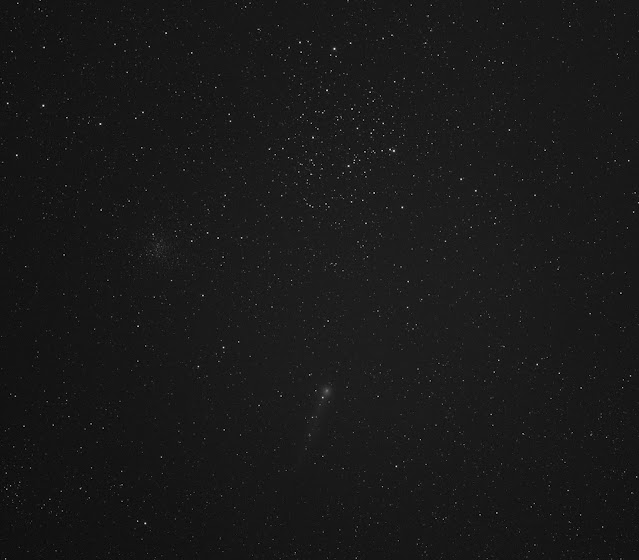My most
recent project is a target rarely photographed. Probably because of the low
surface brightness
Supernova
remnants represent the residual effects of massive stars which have reached the
end of their life-cycle, including a massive stellar explosion as a grand
finale, and which leave behind them spectacular gas clouds and stellar
remnants) which cover vast areas in width across the sky. Regrettably, for
residents of the northern hemisphere, only four supernova remnants (SNR) are
visible
The Crab
Nebula (M1) in Taurus,
the massive
Veil complex (NGC 6960, 6974,
6979, 6992, 6995 and Simeis 188) in Cygnus,
the
Jellyfish Nebula (IC 433) in Gemini and
Simeis 147
(aka Shajn 147, Sh 2-240) also in Taurus.
The most
recognized supernova remnant is perhaps the Crab nebula in Taurus which is
believed to have exploded in 1054 AD as documented by Chinese astronomers of
the time whereas CTB 1 and Simeis 147 are especially dim and represent some of
the faintest objects in the sky.
The
extended galactic supernova remnant CTB 1 in Cassiopeia is one of the closest
SNR's known lying at a distance of about 9,800 light-years away. Measuring
approximately 35.2 arc-minutes in diameter and physically spanning 98 light-years
across, this circular formation rich with filamentary structure lies
immediately east of Caph (β-Cas, mag 2.26) and is characterized with
dominant optical, x-ray and radio sources. CTB 1 was originally thought to be a large
planetary nebula and was included by Abell in his
catalog of planetary nebula (Abell 85) but it was suggested by van den Bergh in
1960 and comfirmed by Willis & Dickel in 1971 to be, in fact, not a
planetary nebula but rather a galactic SNR.
Captured also here is a plethora of Open clusters.
Ngc7790 The widows web cluster
Ngc7788
Frovlov 1
Harvard 21
King12
Berk 58







